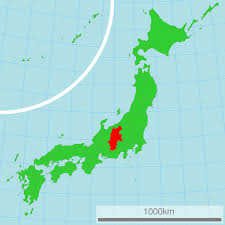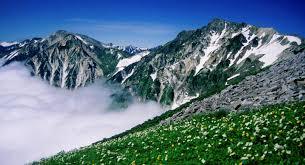About NAGANO
Nagano Prefecture is located basically in the center of Japan and is surrounded on all four sides by 3000-meter tall mountains, earning it the nickname of the “Roof of Japan”.
In 1998, Nagano hosted the Winter Olympics and Paralympics. The world-class snow resorts of Hakuba, Shiga Kogen Heights and Nozawa Onsen continue to attract winter sports enthusiasts every year.

In addition, Nagano has convenient rail and expressway access to Tokyo, Nagoya, Kyoto and other major cities, and is in close proximity to such premier sightseeing spots as Mt. Fuji, Hida-Takayama and the Tateyama Kurobe Alpine Route.
The prefecture spreads out to the north and south over 13,562 square kilometers, making it Japan’s fourth largest in size. Approximately 20% of the area is designated as Natural Parks.
The prefecture boasts a sunny, inland climate, with an annual average of approximately 2000 hours of sunshine, and an average temperature of a moderate 12 degrees Celsius, with relatively low humidity.
Besides being a treasure trove of nature, history and culture. Nagano is bursting with natural hot springs, making it the king of Onsens.
Jigokudani Wild Monkey Park is the only place in the world you can see wild monkeys bathing in an onsen. Seeing their human-like expression on their faces as they soak is sure to bring a smile to your face.
Karuizawa has historically been Japan’s most popular summer resort town. In addition to a multitude of golf courses and tennis courts and a well-appointed ski area, Karuizawa also features an expansive outlet shopping mall for year-round leisure enjoyment.
 Matsumoto Castle has the oldest 5-storied wooden donjon in the country and is a designated national treasure. Its black and white stucco siding provides a striking contrast with the beautiful Japan Alps in the background.
Matsumoto Castle has the oldest 5-storied wooden donjon in the country and is a designated national treasure. Its black and white stucco siding provides a striking contrast with the beautiful Japan Alps in the background.
Tsumago-juku, thanks to the preservation efforts of its townspeople, looks much the way it did during the feudal Edo era. Stepping into this classic post town gives one the feeling of having slipped back in time. Many people enjoy walking the 8 kilometers to Magome along the old Kyoto-to-Edo (Tokyo) Nakasendo Road, parts of which have the original cobblestone.
In addition, thanks to the crisp, clean water and air, Nagano is famous for its delicious soba noodles, apples and sake, as well as oyaki dumplings, gohei mochi snacks, bamboo leaf-wrapped sasa-zushi. These and other traditional foods are part of Nagano’s culinary heritage and one of the prefecture’s biggest attractions.
Citation Article:GO-NAGANO.NET about NAGANO
In 1998, Nagano hosted the Winter Olympics and Paralympics. The world-class snow resorts of Hakuba, Shiga Kogen Heights and Nozawa Onsen continue to attract winter sports enthusiasts every year.

In addition, Nagano has convenient rail and expressway access to Tokyo, Nagoya, Kyoto and other major cities, and is in close proximity to such premier sightseeing spots as Mt. Fuji, Hida-Takayama and the Tateyama Kurobe Alpine Route.
The prefecture spreads out to the north and south over 13,562 square kilometers, making it Japan’s fourth largest in size. Approximately 20% of the area is designated as Natural Parks.
The prefecture boasts a sunny, inland climate, with an annual average of approximately 2000 hours of sunshine, and an average temperature of a moderate 12 degrees Celsius, with relatively low humidity.
Besides being a treasure trove of nature, history and culture. Nagano is bursting with natural hot springs, making it the king of Onsens.
Jigokudani Wild Monkey Park is the only place in the world you can see wild monkeys bathing in an onsen. Seeing their human-like expression on their faces as they soak is sure to bring a smile to your face.
Karuizawa has historically been Japan’s most popular summer resort town. In addition to a multitude of golf courses and tennis courts and a well-appointed ski area, Karuizawa also features an expansive outlet shopping mall for year-round leisure enjoyment.

Tsumago-juku, thanks to the preservation efforts of its townspeople, looks much the way it did during the feudal Edo era. Stepping into this classic post town gives one the feeling of having slipped back in time. Many people enjoy walking the 8 kilometers to Magome along the old Kyoto-to-Edo (Tokyo) Nakasendo Road, parts of which have the original cobblestone.
In addition, thanks to the crisp, clean water and air, Nagano is famous for its delicious soba noodles, apples and sake, as well as oyaki dumplings, gohei mochi snacks, bamboo leaf-wrapped sasa-zushi. These and other traditional foods are part of Nagano’s culinary heritage and one of the prefecture’s biggest attractions.
Citation Article:GO-NAGANO.NET about NAGANO



